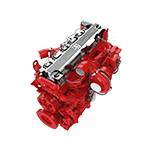Sep . 30, 2024 12:59 Back to list
Understanding Brake Drum Temperature Effects on Vehicle Performance and Safety
Understanding Brake Drum Temperature Importance and Implications
Brake systems are essential components in vehicles, responsible for ensuring safety and control. Among the various elements within brake systems, the brake drum plays a pivotal role, particularly in drum brake setups. One critical aspect of brake performance is the temperature of the brake drum, which can significantly affect braking efficiency, wear, and overall vehicle safety. Understanding brake drum temperature is crucial for vehicle maintenance and operational efficiency.
The Basics of Brake Drums
A brake drum is a cylindrical component that works in conjunction with brake shoes. When the brake pedal is pressed, hydraulic force activates the brake shoes, pressing them against the inner surface of the drum. This friction generates the necessary stopping power to slow down or halt the vehicle. However, this process also generates heat, which can lead to increased brake drum temperatures.
Temperature Dynamics and Factors Influencing Heat Generation
Brake drum temperature can rise due to several factors, including the frequency of braking, the weight of the vehicle, driving conditions, and the type of brake drum material. For instance, frequent braking—such as in city driving—can cause higher temperatures than steady highway driving. Additionally, heavier vehicles exert more force during braking, leading to greater heat generation.
The material of the brake drum also affects its ability to dissipate heat. Common materials include cast iron and aluminum, each with distinct thermal properties. While cast iron provides durability, aluminum offers better heat dissipation. Understanding these materials' thermal characteristics is essential for optimizing brake performance.
brake drum temperature

Implications of High Brake Drum Temperatures
Excessive temperatures in brake drums can have dire consequences. One of the primary concerns is brake fade. This phenomenon occurs when the brake components lose their effectiveness due to overheating. As the brake drum temperature rises, the friction material's performance diminishes, leading to reduced stopping power and longer stopping distances. In critical situations, this can significantly compromise safety.
Moreover, high temperatures can lead to premature wear of brake components. The brake shoes may undergo glazing, where the surface becomes smooth and hardened due to heat, further reducing friction and effectiveness. Additionally, thermal expansion can cause brake drums to warp, leading to vibrations and a less effective braking experience.
Monitoring Brake Drum Temperature
To ensure optimal performance and safety, monitoring brake drum temperature is essential. Several technologies can assist in tracking temperatures, including infrared thermometers and temperature sensors integrated within the braking system. By regularly measuring the temperature, drivers and technicians can identify potential issues early, such as overheating or excessive wear, allowing for timely maintenance and adjustments.
Conclusion
In conclusion, brake drum temperature is a critical factor in the overall safety and performance of a vehicle's braking system. Understanding the dynamics behind temperature changes and proactively monitoring them can significantly enhance braking efficiency, prolong component life, and ensure driver safety. Regular maintenance, awareness of driving conditions, and knowledge of the materials used in brake systems can help mitigate the risks associated with high brake drum temperatures. Ensuring that your vehicle's brake system is in optimal condition is not just about performance; it's about safety on the road.
-
High-Quality Brake Drum MAZ – Durable Drum Brake Drum & Brake Drum and Brake Shoe Solutions
NewsJul.04,2025
-
Brake Drum Man - High-Quality Drum Brake Drums & Brake Shoes for Reliable Performance
NewsJun.24,2025
-
High-Quality Brake Drum Kamaz – Durable Drum Brake Drum & Brake Shoe Replacement
NewsJun.10,2025
-
High-Quality Brake Drum Liza for Drum Brake Systems - Superior Durability and Performance
NewsJun.10,2025
-
High-Quality Brake Drum Kamaz – Durable Drum Brake Drum & Brake Shoe Solutions
NewsJun.10,2025
-
Durable Kamaz Brake Drums High-Performance Truck Parts
NewsJun.09,2025
